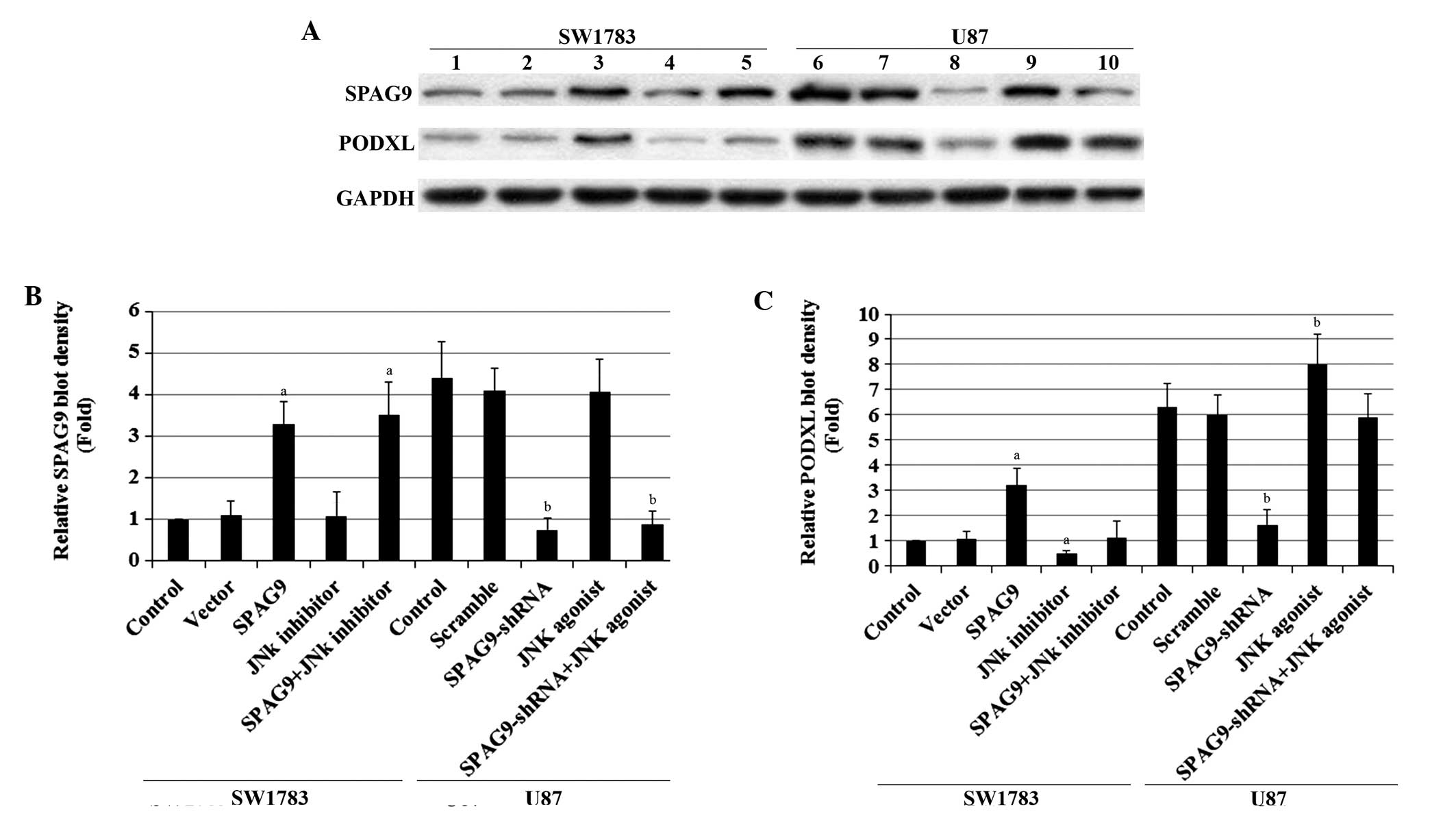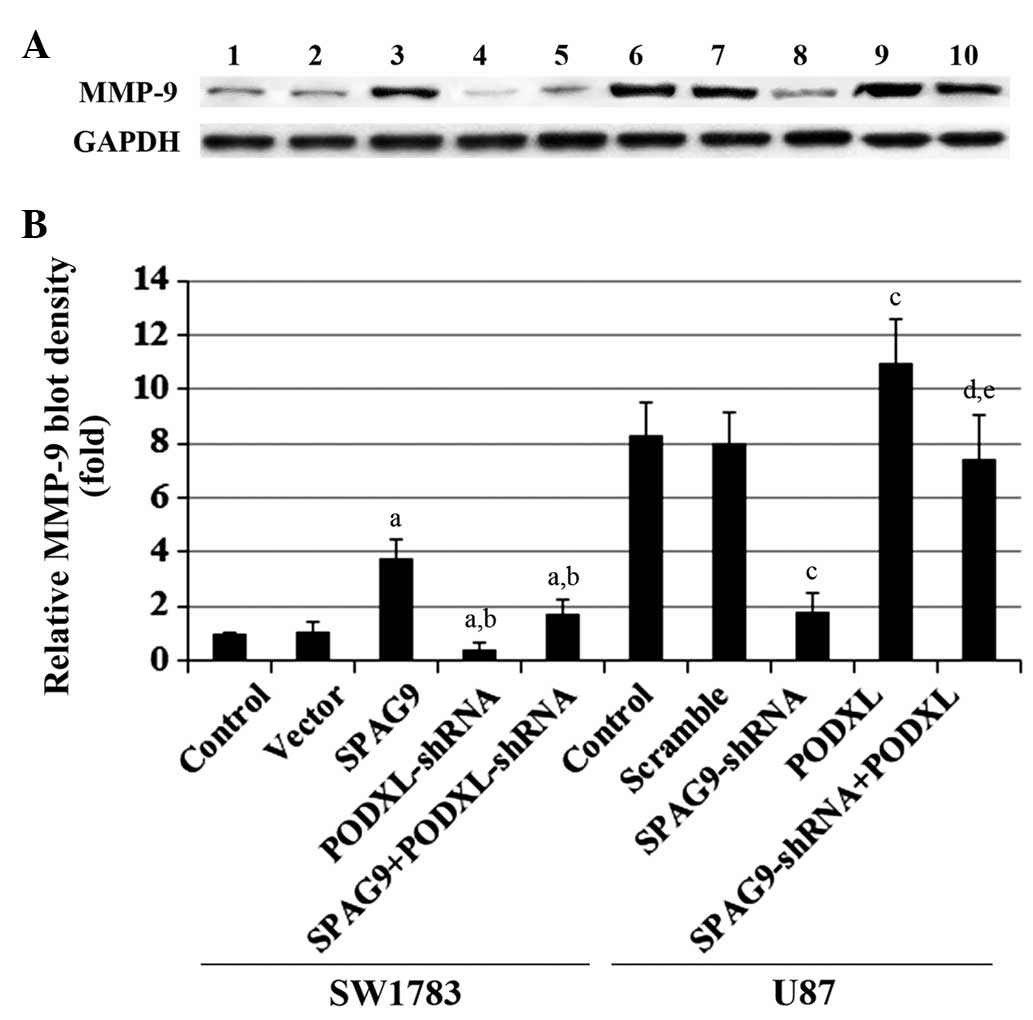Sperm‑associated antigen 9 promotes astrocytoma cell invasion through the upregulation of podocalyxin
- Authors:
- Published online on: April 24, 2014 https://doi.org/10.3892/mmr.2014.2168
- Pages: 417-422
Metrics: Total
Views: 0 (Spandidos Publications: | PMC Statistics: )
Total PDF Downloads: 0 (Spandidos Publications: | PMC Statistics: )
Abstract
Podocalyxin (PODXL) has been found to increase the aggressive phenotype of a number of cancers, including astrocytoma. In addition, the progression of astrocytoma has been associated with sperm‑associated antigen 9 (SPAG9), a recently characterized oncoprotein. In the present study, the association between SPAG9 and PODXL in human astrocytoma invasion and the underlying mechanisms were investigated for the first time, to the best of our knowledge. Overexpression and knockdown of SPAG9 were performed in SW1783 (grade III astrocytoma) and U87 (grade IV astrocytoma; glioblastoma) cells, respectively. PODXL expression at both the mRNA and the protein level, as well as the PODXL gene promoter activity, were significantly increased and decreased in parallel with the overexpression and knockdown of SPAG9 in astrocytoma cells; these effects were blocked by the selective c‑Jun N‑terminal kinase (JNK) inhibitor SP600125 (5 µM) and restored by the JNK agonist anisomycin (25 ng/ml), respectively. SPAG9 overexpression significantly increased cell invasion and matrix metalloproteinase‑9 (MMP‑9) expression in SW1783 cells, and this effect was reversed by knockdown of PODXL. In U87 cells, knockdown of SPAG9 markedly decreased cell invasion and MMP‑9 expression, which was completely restored by overexpression of PODXL. In conclusion, it was demonstrated in the present study that SPAG9 upregulates PODXL expression in human astrocytoma cells at the PODXL gene promoter/transcriptional level through a JNK‑dependent mechanism and that PODXL is a critical mediator of the promoting effect of SPAG9 on astrocytoma cell invasion, possibly through upregulation of MMP‑9 expression. This study provides novel insights into the molecular mechanisms involved in astrocytoma invasion.















